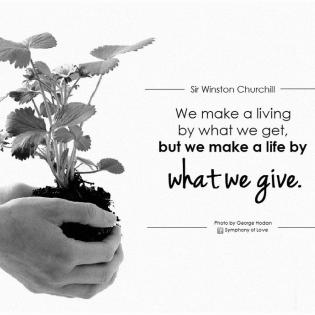Designing Your Philanthropy Collage
Youth Activity: Participants create a collage depicting philanthropic traits and actions. This collage serves as a visual definition of philanthropy. See the handout for supplemental faith-based discussion questions.
“The future depends entirely on what each of us does every day.” ~Gloria Steinem
The youth will:
- expand their understanding of philanthropic traits and actions.
- relate philanthropic characteristics to their own lives.
- posterboard, construction paper or file folders
- scissors, tape or glue, crayons or markers
- magazines
- self-stick notes
Participants take home their philanthropy collages to share with their family members.
- What did you learn about philanthropy?
- Which of the actions or traits on the collage represent you – who you are or actions you have taken?
- What are some of the words and pictures that appear more often in the collages?
- Identify someone you know who is a philanthropist. Share one trait that describes the person and share what that person does that makes them a philanthropist.
Instructions
Today we are going to explore the meaning of philanthropy (giving time, talent, or treasure and taking action for the common good). We are each going to create a “philanthropy collage” with pictures and words representing philanthropy. A collage is a piece of art, made up of many pictures, words or drawings, that represent an idea.
Draw a large T-graph on the chart paper. Label one side “Philanthropic Traits” and the other side “Philanthropic Actions.”
On sticky notes, half of the youth write words that describe a person who shares and cares in their community, one trait per self-stick note.
Invite the other half to write examples of “philanthropic actions” or things that a person who cares and shares might do, one action per self-stick note.
They have five minutes to come up with their traits and actions and put them on the T-chart.
Discuss the words on the chart by asking youth to explain what they put up there or to find patterns and similiarities.
The list is a starting point to make a philanthropic collage that represents the meaning of philanthropy (traits and behaviors) and its role in community.
Each participant works on a piece of construction paper or poster-board and pastes pictures from magazines and printed from the Internet. They may use crayons and markers to add words and designs to help communicate meaning of philanthropy. The collage will be a “visual definition” of philanthropy.
Ask for volunteers to share their collages, explaining to the group some of the actions and traits that they included in their philanthropic picture.
Variations
- When members of the two teams have written the traits on their self-stick notes, each participant should pick one trait that describes them and stick it on their shirt to let people know that they have “philanthropic traits.”
- Philanthropy collages may be created in groups rather than by individuals.
